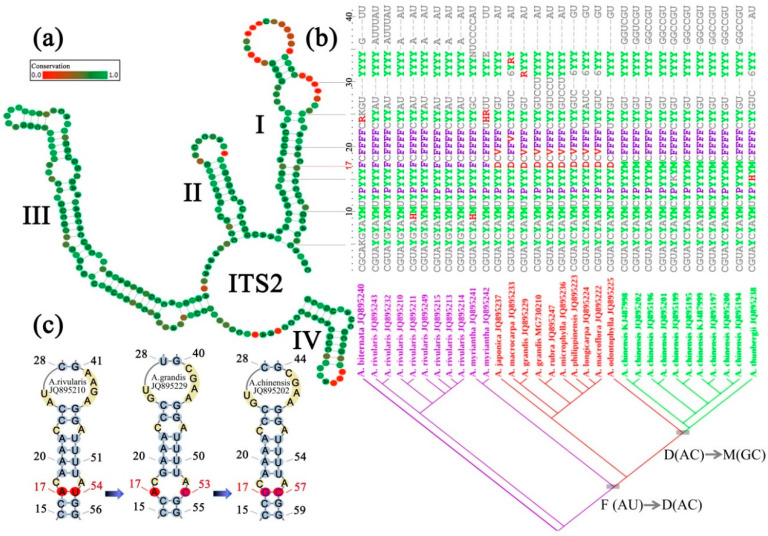Figure 2.
Transformation, visualization and optimization of compensatory base change in ITS2 secondary structure. (a) An ITS2 consensus secondary structure derived from closely related species of Astilbe. The four stems are labelled I–IV. Degree of site conservation over the entire alignment is displayed in colored grades from green (conservative) to red (variable). (b) A transformed coding matrix of sequence-structure information from portion of ITS2 stem I region. Base-pair information of ITS2 secondary structure (a) is coded and merged into a single character by using a modified 28-symbol coding matrix [40], wherein characters involved in CBC (compensatory base change) and hemi-CBC substitutions are highlighted in different colors, i.e., UA(P)-UG(R)-CG(Y), UA(P)-CA(H)-CG(Y), AU(F)-GU(V)-GC(M), AU(F)-AC(D)-GC(M). Character positions in the transformed matrix are corresponding to the ITS2 stem I one by one. Species of each sequence and their phylogenetic relationships are shown below. Base-pair states of site 17 are indicated using different colors in the matrix and are mapped and optimized on the tree to exemplify an unambiguous CBC process. (c) Representative sequence-structures showing different base-pair states of site 17. Numbers following a species name indicate GenBank accession numbers.

